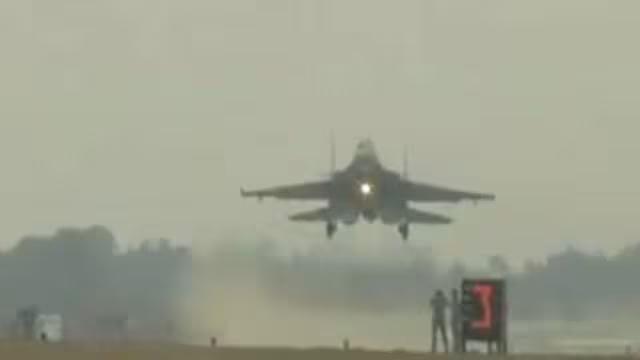
Why is IAF Conducting Fighter Jets’ Landing & Take-off Drill at Ganga Expressway in UP?
In a significant development, the Indian Air Force (IAF) has conducted a series of take-off and landing exercises on the Ganga Expressway in Uttar Pradesh, marking a new milestone in the country’s aviation history. The exercise, which took place at both day and night, involved fighter jets like the Rafale, and was aimed at assessing the expressway’s potential as an alternative runway during times of war or national emergencies.
The Ganga Expressway, which is India’s longest elevated expressway, stretches over 340 kilometers from Greater Noida to Ballia in Uttar Pradesh. While it was designed to reduce travel time and improve connectivity between major cities, the IAF’s recent exercise has brought a new dimension to its utility.
So, what prompted the IAF to conduct this exercise on the Ganga Expressway? And what are the implications of this development for the country’s defense capabilities? In this blog post, we will delve into the details of this exercise and explore its significance.
The Exercise: A First for India
The IAF’s exercise on the Ganga Expressway was a significant event, as it marked the first time an airstrip on an expressway in India was equipped to handle both day and night landings of fighter jets. The exercise was conducted to test the expressway’s infrastructure and assess its potential as an alternative runway during times of crisis.
According to reports, the IAF deployed Rafale fighter jets for the exercise, which were accompanied by a team of ground personnel and air traffic controllers. The exercise involved multiple take-offs and landings, both during the day and night, to test the expressway’s capabilities under different conditions.
Why is the Ganga Expressway Ideal for an Airstrip?
The Ganga Expressway is an ideal location for an airstrip due to its strategic location and infrastructure. The expressway passes through several districts in Uttar Pradesh, including Greater Noida, Agra, and Ballia, making it a critical transportation artery in the region.
Moreover, the expressway’s elevated design and smooth surface make it an ideal location for an airstrip. The elevated section of the expressway provides a flat and stable surface, which is essential for landing and taking off aircraft. Additionally, the expressway’s smooth surface reduces the risk of damage to aircraft and allows for faster take-offs and landings.
Implications for the IAF and National Security
The IAF’s exercise on the Ganga Expressway has significant implications for the country’s defense capabilities. By converting the expressway into an airstrip, the IAF can create an additional runway that can be used during times of crisis or war.
This development is particularly significant in the context of India’s growing military capabilities and its increasing focus on regional security. The IAF’s ability to use alternative runways like the Ganga Expressway can enhance its flexibility and responsiveness during times of crisis.
Moreover, the Ganga Expressway’s location in the heart of Uttar Pradesh makes it an ideal location for an airstrip. The expressway is strategically located near several key cities and military bases, making it an important hub for military operations.
Conclusion
The IAF’s exercise on the Ganga Expressway is a significant development that highlights India’s growing military capabilities and its focus on national security. The exercise demonstrates the IAF’s ability to adapt to changing circumstances and convert existing infrastructure into military assets.
As India continues to face security challenges in the region, the IAF’s ability to use alternative runways like the Ganga Expressway will play a crucial role in enhancing the country’s military capabilities. We can expect to see more such exercises in the future, as the IAF continues to push the boundaries of what is possible in terms of military aviation.
News Source:






